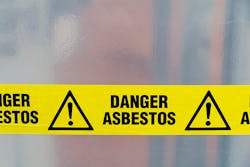The First 10: The Chemicals EPA Will Review Under New TSCA Legislation
EPA on Nov. 29 announced the first 10 chemicals it will evaluate for potential risks to human health and the environment under Toxic Substances Control Act (TSCA) reform.
“Under the new law, we now have the power to require safety reviews of all chemicals in the marketplace.” said Jim Jones, assistant administrator of the of Office of Chemical Safety and Pollution Prevention. “We can ensure the public that we will deliver on the promise to better protect public health and the environment.”
The first 10 chemicals to be evaluated are:
- 1,4-Dioxane
- 1-Bromopropane
- Asbestos
- Carbon Tetrachloride
- Cyclic Aliphatic Bromide Cluster
- Methylene Chloride
- N-methylpyrrolidone
- Pigment Violet 29
- Tetrachloroethylene, also known as perchloroethylene
- Trichloroethylene
TSCA, as amended by the Frank R. Lautenberg Chemical Safety for the 21st Century Act, required EPA to publish the list of the first chemicals under review by Dec. 19. The 10 chemicals were drawn from EPA’s 2014 TSCA Work Plan, a list of 90 chemicals selected based on their potential for high hazard and exposure as well as other considerations.
When the list is published in the Federal Register, it will trigger a statutory deadline to complete risk evaluations for these chemicals within three years. This evaluation will determine whether the chemicals present an unreasonable risk to humans and the environment. If it is determined that a chemical presents an unreasonable risk, EPA must mitigate that risk within two years.
Under the newly amended law, EPA must release a scoping document within six months for each chemical. This will include the hazard(s), exposure(s), conditions of use, and the potentially exposed or susceptible subpopulation(s) the agency plans to consider for the evaluation.
Additional chemicals will be designated for evaluation, and all of the remaining Work Plan chemicals will be reviewed for their potential hazard and exposure. For each risk evaluation that EPA completes, TSCA requires that EPA begin another. By the end of 2019, EPA must have at least 20 chemical risk valuations ongoing at any given time.
About the Author

Sandy Smith
Sandy Smith is the former content director of EHS Today, and is currently the EHSQ content & community lead at Intelex Technologies Inc. She has written about occupational safety and health and environmental issues since 1990.
